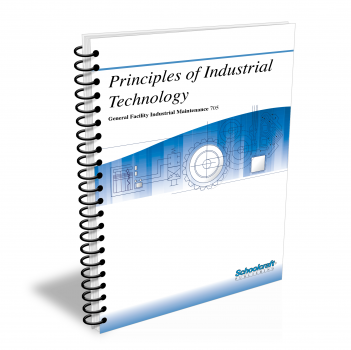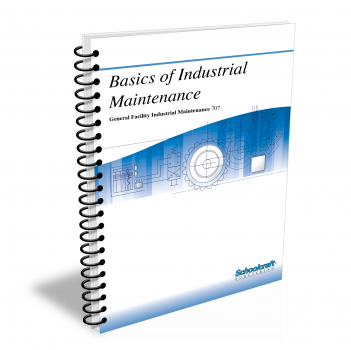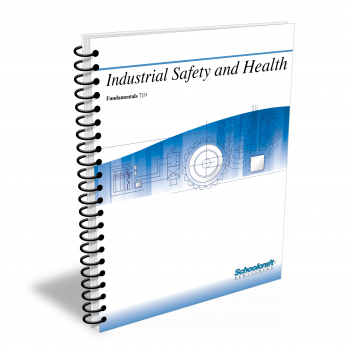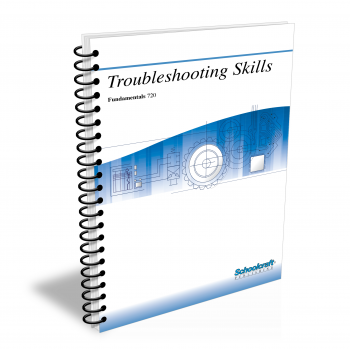Industrial Technical Foundations
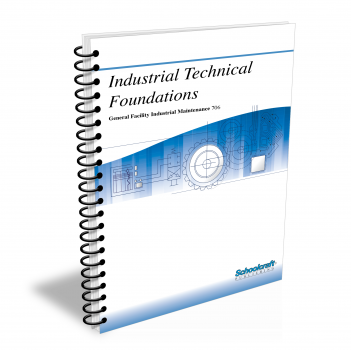
Course Number: 706
The Industrial Technical Foundations textbook provides students with a more comprehensive exposure to a variety of topics focusing on such general topics as blueprint reading, measurement, and tools, but then including other topics of interest for those who might take a mechanical slant to industrial technology.
Does your curriculum require additional topics not included in this textbook? Build a customized version of the Industrial Technical Foundations textbook below.
Recommended Contact Hours – 20
Preview a Chapter
Available Supporting Material
- Table of Contents
- Exam Copies
- Suggested Titles
Table of Contents
Chapter 1: Introduction to Blueprints
Topics: Detail drawings; Notes and dimensions; Assembly and pictorial drawings; Orthographic projections; Auxiliary views; Sections
Learning Objectives:
- Identify details, markings, and machine parts from an assembly drawing.
- Identify an object from an orthographic drawing.
- Identify elements located within the title block of a detail drawing.
- Explain why more than one orthographic projection is needed to show an object on a blueprint.
Chapter 2: Machine Parts
Topics: Simple machines; Screw threads; Heads; Rivets; Welds; Pins; Keys; Springs; Gears; Bearings; Belts and pulleys
Learning Objectives:
- Describe what a machine is, and explain what it does.
- Name the two basic methods of joining machine parts.
- Name and identify from an exhibit several types of threaded fasteners.
- Name the two basic methods of permanent joining.
- Identify gears, bearings, and belt drives on drawings.
- Identify types of screw threads from a specification.
Chapter 3: Machine Drawings
Topics: Machine tools; Exploded views; Assembly and detail drawings; Drafting techniques
Learning Objectives:
- Name the main parts of a lathe.
- State the definition of an exploded view.
- Identify an assembly drawing.
- Identify a compound rest swivel on an assembly drawing.
- Identify a specific part on an assembly drawing.
Chapter 4: Hydraulic and Pneumatic Drawings
Topics: Fluid systems; Pascal's Law; Multiplying forces; Pistons and cylinders; Fluid system components; Symbols
Learning Objectives:
- Name the components represented by common symbols on hydraulic and pneumatic drawings.
- Name the components in a simple hydraulic power system.
- Name the components in a simple pneumatic power system.
- State Pascal's Law.
- Discuss the purposes of the components of hydraulic systems.
Chapter 5: Sketching
Topics: Using and making sketches; Kinds of sketches; Orthographic, isometric, and perspective sketches
Learning Objectives:
- Name the four kinds of sketches.
- Identify an isometric sketch.
- Describe the appearance of a perspective drawing.
- Discuss how to sketch straight lines and curved lines.
- State the definition of a vanishing point.
Chapter 6: Units of Measurement
Topics: Length; Area; Volume; Angles; Time; Speed and velocity; Mass and weight; Force; Work and power; Pressure; Temperature; Electricity
Learning Objectives:
- Identify various units of measurement.
- State the definition of the joule, the coulomb, and the horsepower.
- Explain how to calculate pressure.
- Explain the difference between mass and weight.
- Demonstrate how to measure the volume of an object.
- Explain the difference between the Celsius scale and the Fahrenheit scale.
Chapter 7: Metric Measurement
Topics: Length, area, volume; Mass; Frequency; Speed and velocity; Acceleration; Force and weight; Work, energy, and power; Temperature; Current; Light
Learning Objectives:
- List the seven base units in the SI (metric) system.
- Name three derived units.
- Define work and power in SI units.
- Explain what power is and how it is measured.
- Name two metric measuring instruments and their U.S. Standard equivalents.
Chapter 8: Linear Measurement
Topics: Units; Measurement error; Tolerances; Scales and rules; Scribers and dividers; Bevel gauge; Calipers; Combination square; Using a micrometer
Learning Objectives:
- List five units used for making linear measurements.
- Demonstrate how to use a micrometer.
- Explain what each head of a combination square is used for.
- State the definition of parallax error.
- Define the different types of tolerance.
Chapter 9: Surface Measurement
Topics: Gauge blocks; Measuring screw threads, radius, surface texture; Hardness testing; Testing surface coatings; Detecting defects
Learning Objectives:
- Explain the difference between a continuous dial and a balanced dial on a dial indicator. the definition of pitch on a screw.
- Name two hardness tests.
- Explain why nondestructive testing is preferable to destructive testing on surface coatings.
Chapter 10: Measuring Tools
Topics: Linear and angular measurement; Rules and measuring tapes; Slide, vernier, and micrometer caliper; Squares
Learning Objectives:
- Explain how to hold a rigid rule correctly when measuring an object and show from which point the measurement begins.
- Describe how to set lock joint transfer-type calipers.
- Identify vernier calipers.
- Explain how to take a measurement with a micrometer caliper.
- Name the parts of a combination square.
Chapter 11: Wrenches and Screwdrivers
Topics: Wrenches open-end, box-end, combination, socket, adjustable, torque; Screwdrivers standard, cross-slot, spiral, ratchet, offset; Driving and removing screws; Restoring a blade
Learning Objectives:
- Identify types of materials used for making wrenches.
- Identify open-end, box-end, socket, socket-head, adjustable, torque, and striking-face wrenches.
- Describe two sizes that are important in identifying a socket wrench.
- Identify standard, Phillips, offset, and spiral-ratchet screwdrivers.
- List the steps to follow when driving a screw.
Chapter 12: Metalworking Tools
Topics: Vises; Hacksaws; Files; Taps; Dies; Thread classes; Reamers
Learning Objectives:
- Select the proper hacksaw blades for cutting various materials.
- Explain the difference between single-cut and double-cut files.
- List the types of taps usually found in a tap set.
- Explain how to cut an external thread on a bolt, screw, or stud.
- Explain how to remove a reamer from a hole.
Chapter 13: Hoisting and Pulling Tools
Topics: Knots; Wire rope; Slings, sling angles, hitches; Sling spreader beams; Block and tackle; Chain fall; Pullers
Learning Objectives:
- Explain how to prevent synthetic and fiber rope from unraveling.
- Explain how individual wires and strands of wire are formed into wire rope.
- Identify the most appropriate sling for use near corrosive chemicals.
- Identify a slide-hammer puller.
- Describe different kinds of slings and loads.
Request Exam Copies
Exam Copies
Ready to see a copy of our textbooks? After selecting which textbooks you’d like to review for your course, you can submit your request by either logging in or creating an account so we know where to ship your exam copies. A representative from Schoolcraft will contact you to confirm and finish processing your request.
Exam copies are always free and yours to keep.
Selected Exam Copies
none selected
* Maximum of five copies can be ordered
